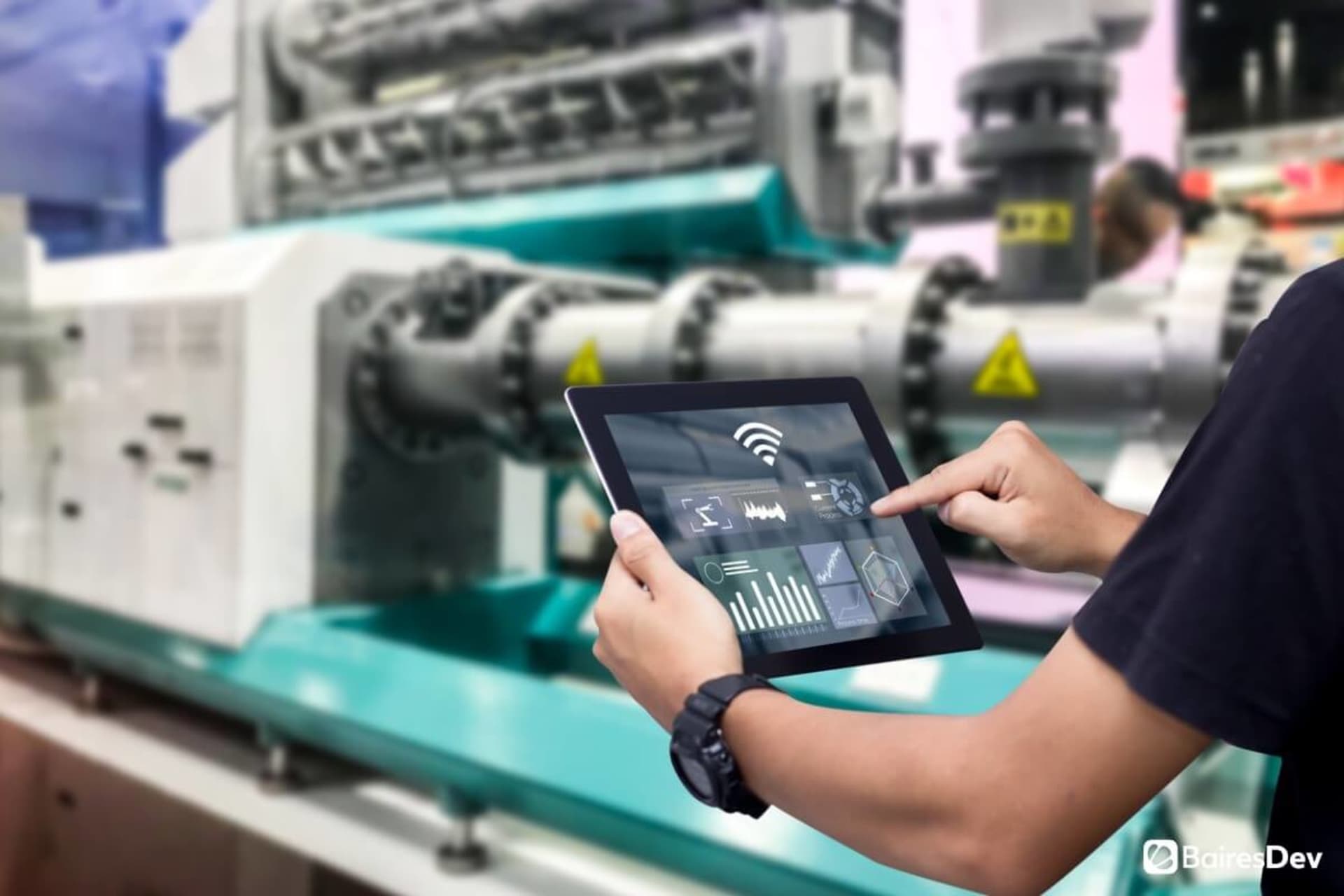The notion of “smart” anything is more than just machines. A truly smart system must include three components — people, processes, and technology. It’s easy to understand why the technology component is essential, but what about people and processes? According to IoT Business News, change management — a highly important smart factory success factor — requires both. For example, smart can mean strategy, like reshoring to avoid supply chain disruption.
But, while people and processes have always been part of factory success, the technology aspect makes them newly smart. Here we examine smart factory technology, to understand what these environments will look like in 2022 and beyond.
AI
Artificial intelligence (AI) can contribute to the success of smart factories in several ways. It can work with other technologies to track and forecast the condition of equipment, to help decision makers determine when to repair or replace machines, creating a more predictable and streamlined maintenance budget and reducing downtime.
AI can additionally help forecast customer demand based on past ordering patterns, helping factory operators improve purchasing efficiency and minimize supply chain disruptions. AI also contributes to automating processes, as described below.
Automation
A combination of technologies, including AI, the IoT, and robots, enables companies to automate many aspects of their operations. Automation creates conditions under which factory operations can take place more quickly and accurately and take over boring or repetitive tasks that humans don’t want to perform. The following video explains more about factory automation.
Big Data
Within a smart factory setting, data can be collected from a variety of sources, brought together, and analyzed to make improvements in efficiency and other success factors. It can also be used to analyze customers’ buying habits to create better marketing campaigns and perfect product offerings.
Big data and data analytics can also be used to support product customization. According to SAS vendor Selerity, “In the past, it didn’t make sense to customise because of the time and effort involved to appeal to a smaller group of customers. Data analytics is changing that by making it possible to accurately predict the demand for customised products.”
Cloud Computing
Cloud computing enables factories to store and process data at a lower cost and with greater convenience than traditional on-premise solutions. Cloud-based repositories may be connected to various factory systems, allowing large amounts of data from different sources to be efficiently uploaded in one place.
In addition to system data, cloud platforms can handle information generated by edge computing, which is computing that takes place closer to the data source. The benefit of edge computing is that it leaves centralized computing resources to be used for more intensive tasks. However, some edge data may need to be sent on for further processing, and a cloud system can be used for this purpose.
IoT
Internet of Things (IoT) technology can support numerous applications within factory settings. This technology works through the use of sensors that send data back to a central repository, where it can be analyzed and mined for useful insights. For example, temperature sensors can take regular readings to help determine the optimal temperature for particular products.
As another example, sensors can be used to monitor the condition of equipment, to analyze which pieces might need to be repaired or replaced, and when. The ability to predict these events gives decision makers more control over their budgets and other planning methods. Because this specific use of the IoT is so critical to smart factories, it has its own name, the Industrial Internet of Things (IIoT).
Machine Vision Systems
Machine vision systems can take over inspection functionality by closely inspecting parts or products and verifying that they meet certain criteria. When performing its work, a machine vision system completes several tasks. First, it detects the presence of the item to be inspected. Then it captures an image of it, using a light source to highlight important areas. The system then translates the image into digital form and stores it to be processed.
Once that’s done, the system identifies the presence or absence of predetermined attributes. These systems are useful for more quickly and accurately performing inspections than humans are able to do. Such abilities result in fewer product defects and, therefore, lower costs and less potential reputational damage.
Robots
Robots provide value by automating repetitive tasks. Consider the efficiencies gained and money saved when one robot can do the work of several humans and do it more quickly and accurately. Robots can take over tasks like building machines, assembling and shipping products, lifting heavy objects, and working with chemicals that could be harmful to humans.
The use of robots within the factory environment can keep humans safe in other ways too. For example, reducing the number of humans in a small area can cut down on the transmission of diseases such as COVID-19. Additionally, many factories include harmful machinery that is better suited to use by robots than by humans.
Another advantage of robots in smart factories is that they don’t need to rest. So, they can be programmed to continue working around the clock, considerably increasing potential output.
A Cooperative Partnership
Contrary to the popular belief that machines in factories will take jobs away, according to a recent Inc. article, “building smart factories will trigger demand for skilled laborers, creating many more jobs for people trained in technologies like AI, robotics, and the cloud.” The more realistic scenario is various forms of technology working alongside humans in a cooperative partnership.
Each component enhances the work of the other. Humans program machines to work more effectively, while machines support human goals such as increased production, reduced costs, and greater efficiency. However, it may take some time and effort for humans to change to the team mindset and gain the skills needed to make it work well.
Companies can help by introducing change management programs like training on how to work with machines and upskilling to ensure employees whose roles are replaced by technology can be rehired somewhere else within the company.







